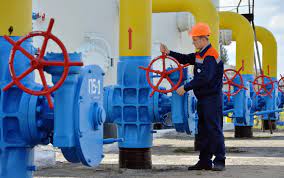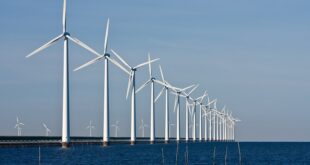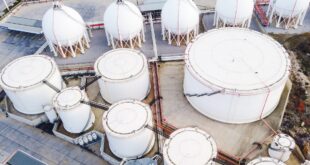Earlier this month, the price of natural gas in Europe spiked by as much as 40% on the news that gas platform workers in Australia may launch industrial action.
The strike could affect a tenth of global LNG, media reported last week, which would send prices higher. Indeed, the very threat of a strike sent prices higher, and once again highlighted Europe’s difficult energy security position.
Last year, the EU celebrated the success of its efforts to reduce its dependence on pipeline Russian gas. Indeed, that dependence was greatly reduced, not without the help of Gazprom itself, which significantly reduced the flow of gas to Europe, prompting buyers there to look for alternatives.
The celebrations did not take very long to turn into complaints. Accustomed to cheap pipeline gas, European buyers were finding out that the LNG spot market had very different rules, which ultimately resulted in higher—much higher—prices when a new buyer as big as the EU appeared on the stage.
By the end of the year, politicians in Europe were complaining about having to pay through the nose for natural gas on that spot market, and some were already closing long-term deals with Qatar and the United States. Even Germany, a staunch opponent of continued reliance on gas, gave up and signed long-term deals and decided to build a permanent LNG import terminal.
What this did was cement the continent’s now almost complete dependence on LNG. Bar some pipeline imports from Norway and Azerbaijan, most of the European Union’s gas in the years to come will be sourced from the international LNG market. And this means higher prices for longer. And even higher prices and the constant threat of a price shock in case of supply disruption, as evidenced by the Australian strikes news.
“The potential for strike action at LNG export plants in Australia once again highlights the fact that we are now clearly in a globalised gas market,” ICIS analyst Tom Marzec-Manser told the Financial Times.
“Europe has understandably backfilled Russian pipeline supply with versatile LNG. But that versatility leads to increased price volatility.”
Currently, European gas stocks are at a record high for this time of the year. In fact, a week ago – days before the news broke that Australian LNG workers are considering a strike – Reuters’ John Kemp reported that this record-high level of gas stocks was keeping a lid on prices. All it took for the cover to blow off was the news of a potential strike in one of the world’s biggest LNG producers.
There are already warnings that the energy crisis in Europe is not over. Indeed, these warnings began as early as last year amid the celebrations of switching from pipeline to liquefied gas and how independent that made Europe.
At the time, few were in the mood to listen to warnings that the show was only beginning, not ending. Now, things are changing. Winter is once again on the way, asmj far as it may seem in August. This means there’s a spike in demand for LNG on the horizon. And a spike in demand means a spike in prices, inevitably.
“The crisis is not over yet,” the chief executive of E.ON, one of Germany’s biggest utilities, said earlier this month. “We must continue to work on the issue of austerity. This is the best way to ensure affordability for customers and also to achieve competitiveness of our society and our economy.”
If the CEO of E.ON is talking about austerity—not exactly a popular idea among regular electricity consumers—then the situation must be serious. It suggests there is no great chance of abundant LNG supply and weak competition from Asia that would make the commodity cheaper. That leaves limiting demand as the only choice.
Indeed, austerity is already in place. The exorbitant prices last year made it a natural choice to curb consumption. Indeed, Reuters reported last month that since last year, Europe’s gas consumption has fallen by between 10% and 15% compared to the previous decade. The decline is particularly marked among industrial consumers.
Consumption remained lower even as gas prices calmed down. That’s no wonder since even calmer prices have been 35% higher this year than the average for 2018 to 2021. These higher prices have hit especially hard industries that make the backbone of the EU’s manufacturing sector, including steel and cement making, fertilizers, and petrochemicals.
Last year, LNG made up 34% of the European Union’s gas imports in 2022, the FT reports. This year, this is expected to rise to 40%. That would be virtually the same market share Russian pipeline gas had in the European Union prior to the February 2022 invasion of Ukraine.
That means that the EU, for all its self-congratulations on achieving energy independence, has simply replaced one form of dependency for another. This new form goes hand in hand with austerity and loss of competitiveness for some of the most important industries on the continent.
All this suggests some unpleasant facts about the very source of that competitiveness and the EU’s economic and social wealth—the era of abundance that Emmanuel Macron bid farewell to last year.

 Iran Energy News Oil, Gas, Petrochemical and Energy Field Specialized Channel
Iran Energy News Oil, Gas, Petrochemical and Energy Field Specialized Channel



